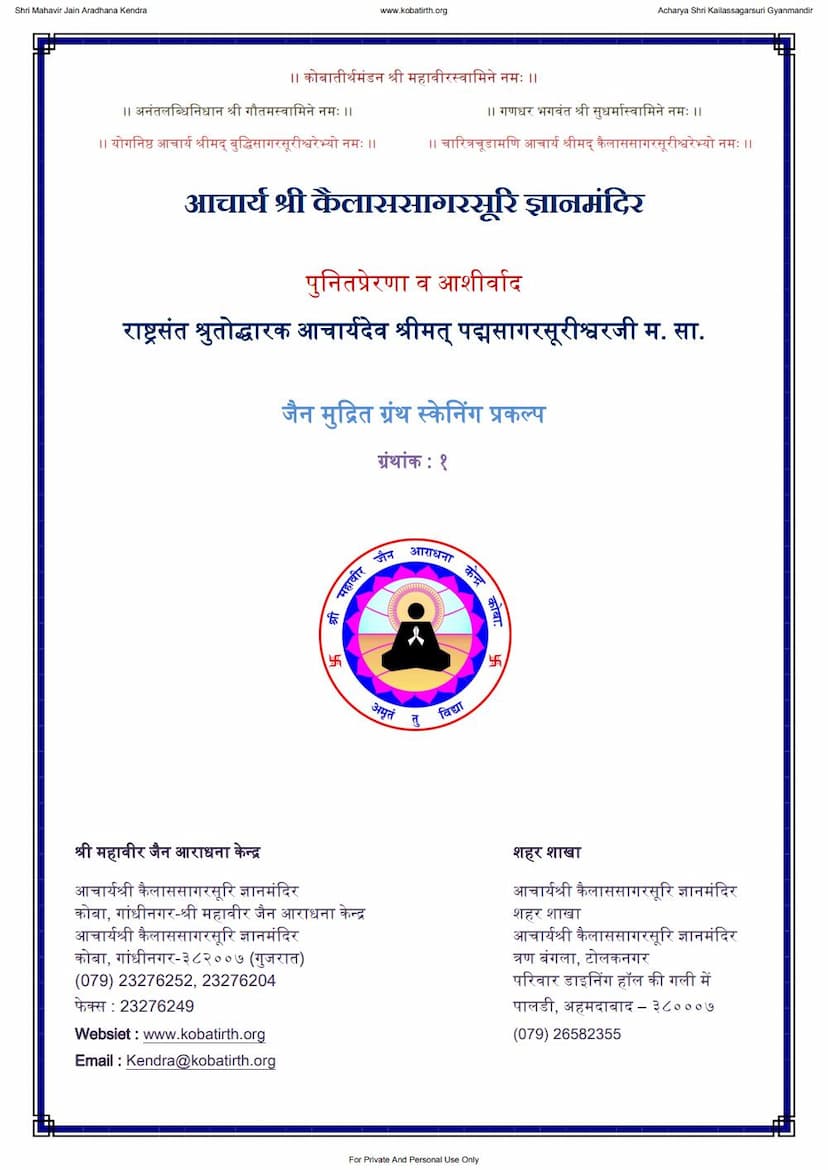Bharat Bhaishajya Ratnakar Part 03
Added to library: September 1, 2025

Summary
Comprehensive Summary of "Bharat Bhaishajya Ratnakar Part 03"
This document is the third volume of the "Bharat Bhaishajya Ratnakar," a comprehensive Ayurvedic text compiled by Nagindas Chaganlal Shah, Gopinath Gupt, and Nivaranchandra Bhattacharya, and published by Unza Ayurvedik Pharmacy. The text is presented in Hindi and focuses on various medicinal preparations and their therapeutic applications.
Overall Structure and Scope:
The book is organized systematically, covering a wide range of Ayurvedic formulations. It follows a classification based on the final form of the medicine, such as Kashaya (decoctions), Churna (powders), Gutika (pills), Lepa (ointments), Taila (oils), Ghrita (medicated ghees), Rasa (mercurial preparations), Murchana (fortifications), Asava/Arishta (fermented liquids), and Kshar (alkalis).
Key Content Areas and Highlights:
-
Kashaya Prakaran (Decoctions): This section, starting from page 12, details numerous decoctions prepared from various herbs and their combinations. Each entry typically includes the name of the preparation, the ingredients, the method of preparation, and the diseases it treats. Examples include decoctions derived from Danti (Baliospermum montanum), Daruharidra (Berberis aristata), Dashamoola (a combination of ten potent roots), and many others. The text provides detailed instructions for preparing these decoctions, often specifying the ratio of ingredients, water quantity, and the process of simmering and straining.
-
Churna Prakaran (Powders): This section focuses on powdered medicinal preparations. It describes the combination of various herbs to form potent powders for treating a range of ailments, from dental issues (Dantamasi, Dantayoga) to digestive problems and general well-being.
-
Gutika Prakaran (Pills): This part of the book elaborates on the preparation of pills, highlighting their ease of administration and efficacy.
-
Lepa Prakaran (Ointments/Pastes): This section provides recipes for topical applications, detailing how to create pastes and ointments from herbs and other natural substances for skin conditions, wounds, and other external ailments.
-
Dantaadi Yoga (D preparations): The text extensively covers remedies starting with the letter 'Da' (द), offering a vast array of treatments for various conditions. This includes a significant number of preparations for ailments related to digestion, fevers, respiratory issues, skin diseases, and more.
-
Emphasis on Practicality and Utility: The book emphasizes its practical utility, stating that it was compiled by meticulously sifting through numerous ancient and modern texts. The "Kosha-shaili" (encyclopedic style) followed makes it easy to find specific remedies. The inclusion of a disease-wise index ("Chikitsapath-Pradarshini") at the end further enhances its practical value.
-
Detailed Preparations: The text provides meticulous details on the preparation of each formulation, including:
- Ingredients: Often specifying exact herbs, their parts (root, leaf, fruit, bark), and sometimes their proportions.
- Process: Describing methods like decoction, paste formation, trituration, calcination, fermentation, etc.
- Dosage and Administration: In some instances, the text mentions dosage or method of administration.
- Therapeutic Indications: Clearly stating the diseases or symptoms the preparation is intended to treat.
- Sources: Citing the original texts from which the formulations were drawn (e.g., Rasaarnava, Vangasena, Charaka Samhita, Bhavaprakasha, etc.).
-
Jain Context: The book is published by "Shri Mahavir Jain Aradhana Kendra" and bears the "JAIN EDUCATION INTERNATIONAL FOR PRIVATE AND PERSONAL USE ONLY" disclaimer. While the content itself is Ayurvedic, its publication by a Jain institution suggests an alignment with traditional knowledge systems valued within Jainism, which often reveres ancient wisdom and holistic healing.
Specific Sections and their Focus:
The provided pages showcase the meticulous organization of the book. The "Vishayanukramanika" (Table of Contents) on pages 9-10 reveals a detailed breakdown of categories such as:
- Anjan (Kohl/Eyedrops)
- Kalpa (Herbal compounds/Formulations)
- Rasa (Mercurial/Mineral preparations)
- Mishra (Mixed formulations)
- Kashaya (Decoctions)
- Churna (Powders)
- Gutika (Pills)
- Guggulu (Preparations with Guggulu)
- Avaleha (Jellies/Confections)
- Ghrita (Medicated Ghee)
- Taila (Medicated Oil)
- Asavarista (Fermented Preparations)
- Lepa (Ointments/Pastes)
- Dhupa (Fumigation)
- Dhumra (Medicinal Smoke)
- Nasya (Nasal drops)
- Chikitsa Patha Pradarshini (Disease-wise index)
The subsequent pages (12 onwards) begin with the "Kashaya Prakaran," illustrating the book's approach with specific recipes starting with the letter 'Da' (द). Examples include Danda-utpala Swarasa (juice of a specific plant), Dadhi-dugdha-kṛti (curd preparations), Dadhyamla-prayoga (use of curd-whey), and various potent decoctions from Dantya (Baliospermum montanum), Daruharidra (Berberis aristata), and Dashamoola.
Overall Impression:
"Bharat Bhaishajya Ratnakar Part 03" is a valuable resource for understanding the practical aspects of Ayurveda. It provides a vast collection of well-documented recipes and their traditional uses, making it a significant contribution to the preservation and dissemination of Indian medicinal knowledge. The publication by a Jain institution highlights the enduring respect for traditional healing practices.